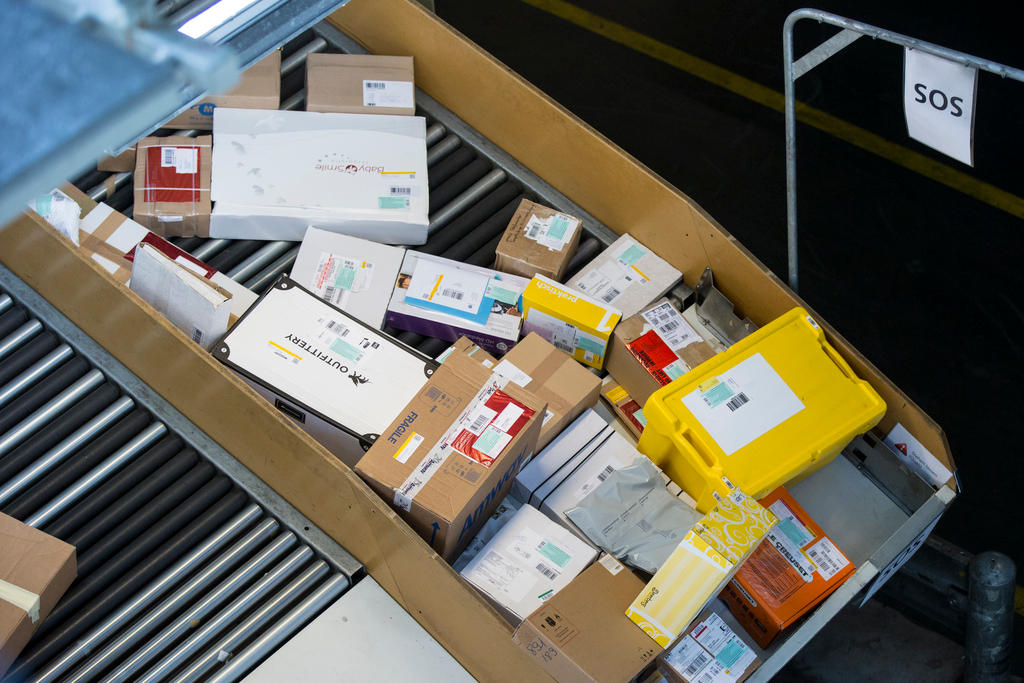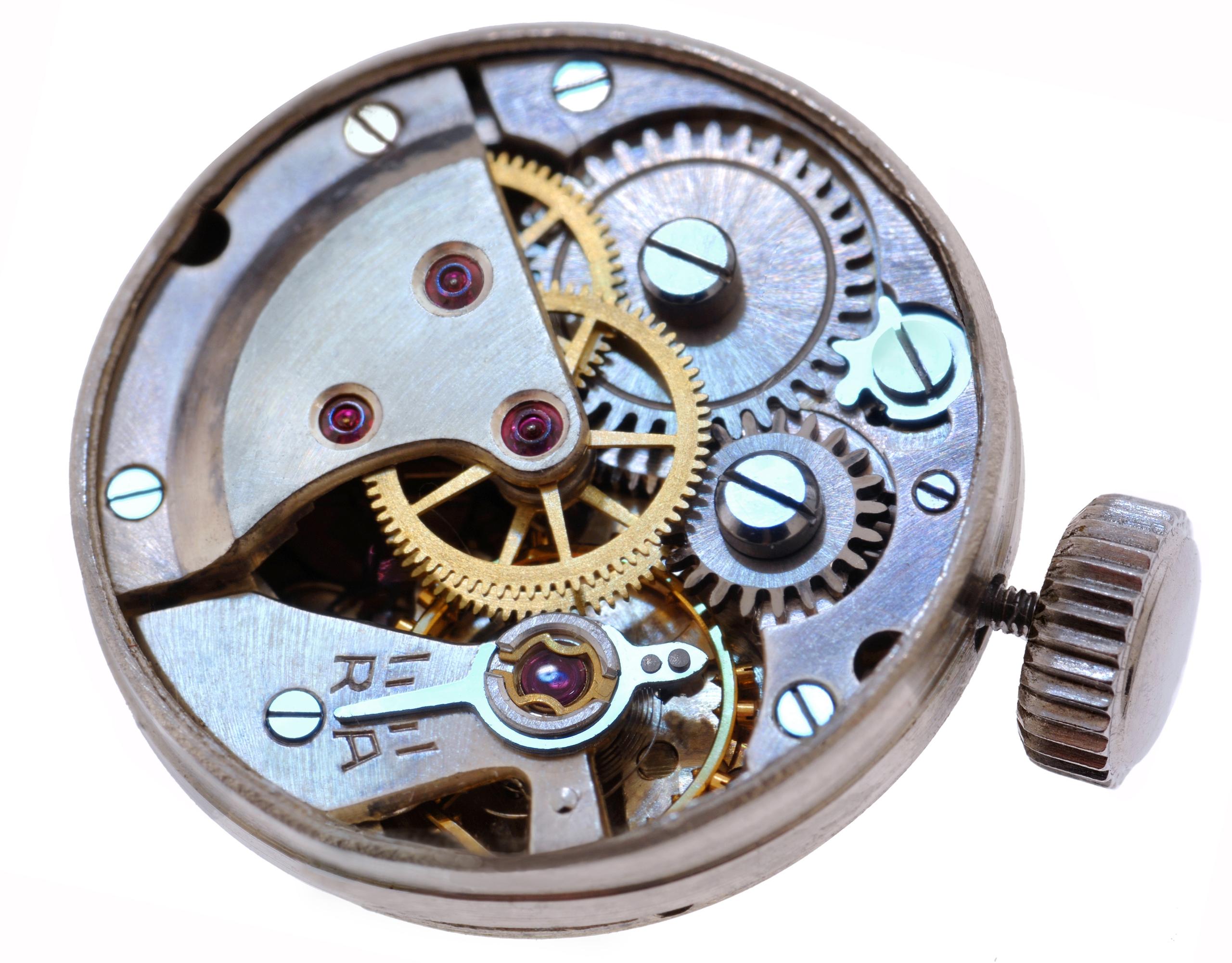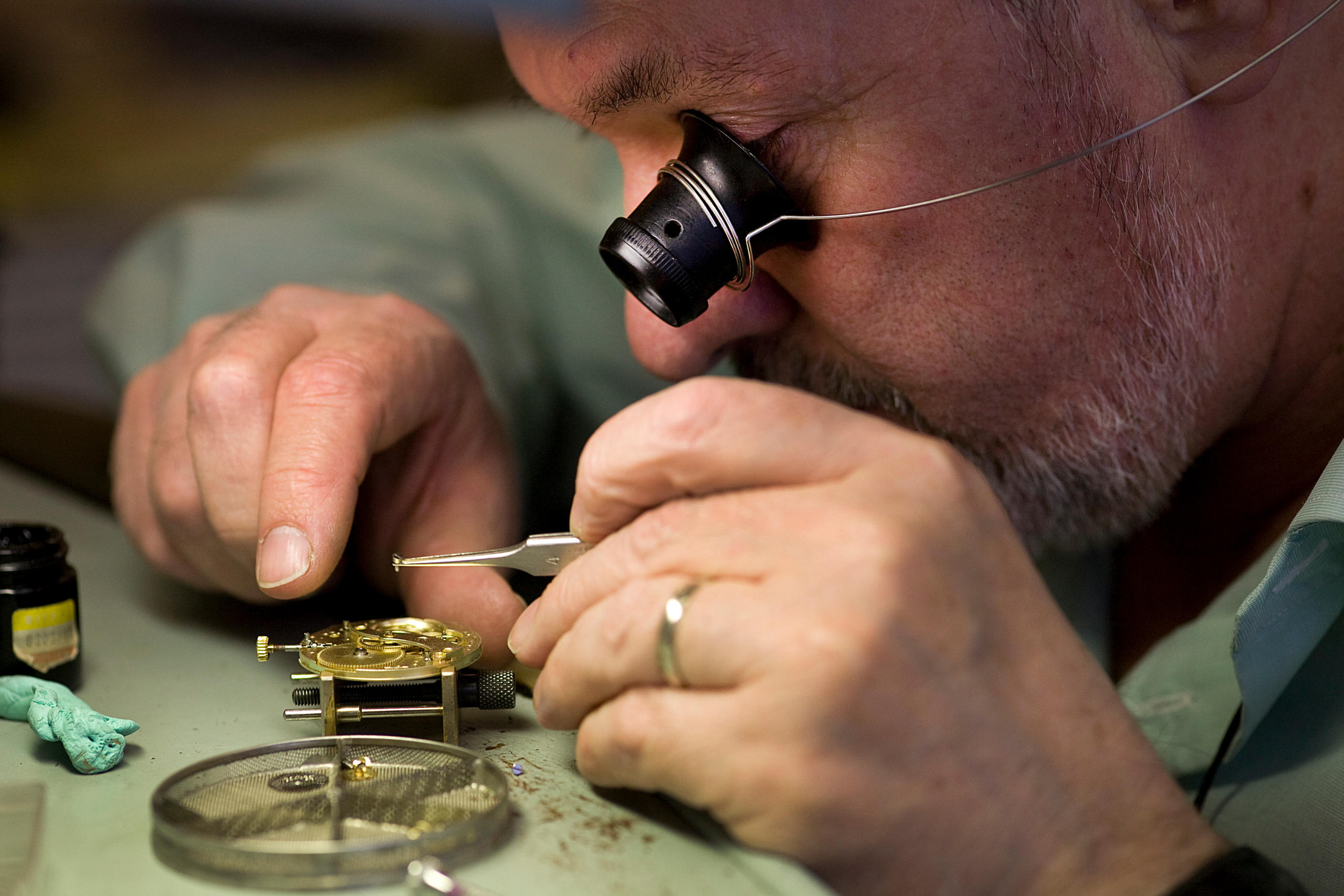Baselworld: Mechanical clocks make a comeback

A clock generally has three hands to indicate hours, minutes and seconds. But how many legs should it have, and how much are you willing to pay for it?
A new breed of timepieces showcased at BaselworldExternal link – the annual watch and jewellery fair in the Swiss city of Basel – could keep the tradition of clockmaking alive.
Inspired by the octopus and the film Abyss, the eight-legged Octopod is certainly an eye catcher, even among MB&FExternal link’s rather outlandish watches. The independent watchmaker only started producing clocks four years ago in partnership with 179-year old clock firm L’EpéeExternal link. They now sell eight limited edition clocks that retail for between CHF15,000 ($15,830) to just over CHF50,000.
At first glance Swiss clock exports appear to be declining, but it is worth noting that the average value of an exported clock has jumped from CHF136 to CHF1067 between 2009 and 2017, with far fewer clocks sold. This indicates a trend for more luxurious timepieces instead of mass-produced ones.
“Retailers thought our first clock – Starfleet Machine – will just sit and decorate their stores but they sold well. What began as a one-off attempt has now become an integral part of our collection,” Charris Yadigaroglou, chief communication officer of MB&F told swissinfo.ch.
New wine in old bottles
According to Yadigaroglou, people buy the playful clocks because they are sculptures or miniature works of art. In this digital world, they are intriguing because they are tactile and you can hear them tick, he adds..
Others offer more practical explanations.
“Classical clocks are not suitable for modern homes. The world of furniture has changed a lot in the last few years and this has led to a demand for a different type of clock,” says Alessandro Rigotto of Meccaniche Orologi MilanoExternal link.
His answer is to make modern designs using classical clockmaking skills and techniques. This means they don’t come cheap. Prices range for CHF20,000 to CHF30,000 but Rigotto has received more orders this year at Baselworld than the previous year.
Sharing the same booth is Baselworld old hand Robert Bray whose company Sinclair HardingExternal link makes classical clocks based on designs that are sometimes hundreds of years old. He still believes there is a market for old fashioned timepieces.
“This year I was a bit apprehensive as Baselworld has become smaller but it has been the best so far. I sold 46 pieces ranging from £7,000 to £42,000,” he says.
But even Bray has made a foray into the 21st century. This year the Englishman has collaborated with designer Jorg HysekExternal link to create a CHF62,000 clock that simulates a digital display using a mechanical movement.
“It is a sculpture not a clock because the indication of time is not the most important part but the emotions that are created. It is for people who like art and are mechanically minded,” says Hysek.
“I think the trend is more of a marketing exercise from certain brands as you don’t see too many watchmakers offering clocks. It is something we are seeing now and will last for a certain while but I am not sure it is a resurgence that will bring clocks back permanently,” says Joshua Munchow, watch journalist for Quill&PadExternal link.
It may be temporary but the trend for modern, quirky and pricey mechanical clocks is one that some in the watch industry are determined to ride to the finish. For example, MB&F have plans to launch their ninth clock in September and have plans for more next year. Only time will tell if the uptick in sales will continue.

In compliance with the JTI standards
More: SWI swissinfo.ch certified by the Journalism Trust Initiative














You can find an overview of ongoing debates with our journalists here . Please join us!
If you want to start a conversation about a topic raised in this article or want to report factual errors, email us at english@swissinfo.ch.